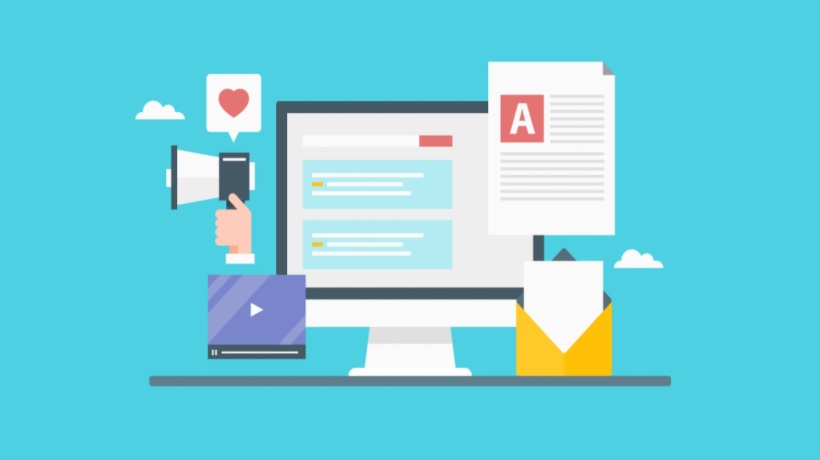Introduction To Portfolio Assessments
In an article on improving the quality of performance-based assessments in the classroom, Jay McTighe tells the reader to "Think of assessment as analogous to photography. Like the results on a test, a picture can be informative; however, no single photo can provide a complete portrayal of a situation…what we need is a photo album of evidence on student learning, not a snapshot…" (McTighe, 2018). This is the primary aim and argument in favor of using portfolios as a form of assessment.
What Are Portfolio Assessments?
According to Hudori, et al. (2020), "A portfolio is a purposeful collection of student work that exhibits the student’s efforts, progress, and achievements in one or more areas of the curriculum" (Hudori et al., 2020, p. 1). Within this text, H. Douglas Brown is cited as arguing that portfolio assessment, then, is "one of the most popular alternatives in assessment, especially within a framework of communicative language teaching" (Brown, 2000, as cited in Hudori, et al., 2020, p. 1). Portfolio assessments are an alternative in that they serve as a secondary option to traditional forms of assessment, such as paper and pencil tests. Portfolio assessments are also authentic, as they assess what a student can do rather than what they know.
What Are ePortfolio Assessments?
As our society continues to progress into the age of technology, more aspects of education (and other industries) continue to be reformatted so that they may be utilized on electronic/digital platforms. As indicated within a research study conducted by Peter Slepcevic-Zach and Michaela Stock, "The electronic implementation of portfolios is called 'ePortfolios,' 'electronic portfolios,' or 'digital portfolios.' These terms are used interchangeably (Hormung-Prähauser, et al., 2007, as cited in Slepcevic-Zach and Stock, 2018, p. 293) and represent digital realizations of paper-based portfolios, which are implemented as electronic folders" (Bauer amd Baumgartner, 2012, as cited in Slepcevic-Zach and Stock, 2018, p. 293). Through the rapidly expanding age of technology, especially within the field of education, ePortfolios have become a popular replacement for traditional paper-based portfolios. Nevertheless, the use of ePortfolios as a form of alternative assessment carry several noteworthy advantages and disadvantages.
Advantages Of ePortfolio Assessments
1. Improved Communication Amongst Stakeholders
There is truth in the old adage that "it takes a village to raise a child," especially in that child’s educational career. Effective communication between administrators, teachers, parents, and the students themselves are imperative in ensuring the success of the learners. The use of ePortfolio assessments improves the basis for communication and evaluation from not only the students, but also their parents and their teachers. As noted by Osman Birgin and Adnan Baki (2007), portfolio assessment "allows students parent, teacher and staff to evaluate the students’ strength and weakness…" and "increases support to students from their parents and enhances communication among teachers, students and parents" (Birgin and Baki, 2007, p. 84). Gürbüz Ocak and Mustafa Ulu further reinforce this in noting the following:
Portfolios foster communication among students, teachers and parents (Micklo, 1997, as cited in Ocak and Ulu, 2009, p. 35). Through portfolio, students, teachers and parents can understand what type of learning takes place in the classroom (Lamdin and Walker, 1994, as cited in Ocak and Ulu, 2009, p. 35). In addition, students get better communication with family members during the portfolio work (Ocak and Ulu, 2009, p. 35).
2. Increased Feeling Of Autonomy Amongst Students
One of the more unique traits of portfolio assessments is the autonomy students gain in being able to choose their own artifacts (pieces of writing) that are to be included within the portfolio. Such autonomy provides students with a feeling of investment in their work and a stronger intrinsic motivation to succeed. In a research study on the emotions experienced from using ePortfolios in a university-based virtual education environment, "The results show that positive emotions are foremost and above average, ranked as follows from strongest to weakest: freedom, motivation, curiosity, and inquiry" (Crisol Moya et al., 2021, p. 11). The authors additionally note here that "The emotion of 'freedom' that students experience to a major degree can show that students are comfortable in their role as knowledge builders through the e-portfolio. This feeling implies that students are in a position to control their learning and are free to handle their own reflection processes" (Crisol Moya et al., 2021, p. 11).
3. Real-World Relevance And Preparation
One of the primary goals of education is to provide students with the tools needed to succeed in the real world through the development and use of authentic, relevant tasks. The development of an ePortfolio can prepare students for the real world by introducing them to a variety of platforms that are similar to what professional journalists and bloggers might use. In an article published via eLearning Industry, Joseph Ng notes that, in his approach to using the web platform Blogger as an ePortfolio hosting site, "Each student would have their own portfolio/blog. This would be an extremely useful feature in the real world, compared to closed quizzes that they would never use again. Some of the students have gone on to use their blog knowledge in business and teaching" (Ng, 2022).
Disadvantages Of ePortfolio Assessments
1. Unreliability Due To Subjectivity And Ambiguity
One noteworthy quality of a traditional multiple-choice exam is the consistency to which a particular question is either correct or incorrect, regardless of who is answering the question or who is grading it. In that regard, one notable disadvantage to an ePortfolio assessment approach is the extent to which they may be unreliable, due to their subjective nature and/or any form of ambiguity in the way they are initially introduced, or the way their criteria is explained. To the first point here, Derrick Meador via ThoughtCo notes that "Portfolio assessments are very subjective in nature. Even if the teacher utilizes a rubric, the individualized nature of a portfolio makes it difficult to remain objective and stick to the rubric. Two students working on the same learning standard may have two totally different approaches thus learning may not be the same" (Meador, 2019). To that extent, rubrics for portfolio assessments ought to be written in a more general manner. In reference to the clarity of portfolio assessment criteria, Birgin and Baki suggest that "If the purpose and assessment criteria of portfolio are not clear, the portfolio can be just a miscellaneous collection of words that can’t reflect students’ growth or achievement accurately. Thus, the purpose and assessment criteria of portfolios should be explained in detail and clearly" (Birgin and Baki, 2007, p. 85).
2. Expense Of Time And Energy
Many teachers may agree that there is never enough time in the school year to fully instruct and assess students the way they might under more ideal circumstances. Developing and grading an ePortfolio assessment can cost a teacher time and energy that they may not have enough of. In a paper published during his postgraduate study of English language education, Teddy Fiktorius notes that "Portfolio assessment can be very time-consuming for teachers…the strategy puts more pressure on teachers and makes some feel anxious especially those using it for the first time” (Fiktorius, 2013, p. 8).
3. Lack Of Support From Parents
As mentioned above, one observed and research-driven advantage of portfolio assessments is the improved communication that comes as a result of using this approach. Though improved communication may come as a result of using portfolio assessments, lack of parental support is unfortunately also a possibility, given the unfamiliar nature of these types of assessments. Birgin and Baki address this in noting that "Another problem of portfolio assessment is parental or community support for such a new and unfamiliar system of assessment…Such a change could be difficult for parents to accept or adjust to without considerable effort to educate them as to the nature and advantages of the new system" (Thomas et al., 2005, as cited in Birgin and Baki, 2007, p. 85).
Effectively Using ePortfolio Assessments In The English Classroom
Considering each of the previously stated advantages and disadvantages, the following three strategies are provided for how a teacher (particularly an English/language arts teacher) may best use ePortfolio assessments in their classroom.
1. Use It In Conjunction, Not Commutation
Most reading/language sections on standardized tests address not only a student’s reading ability, but also their editing, vocabulary, spelling, and writing abilities. Because of how multifaceted these standardized testing sections tend to be, it is essential for students—in the English classroom—to have experiences using ePortfolio assessment as well as traditional assessments that may help prepare them for those high-stakes tests. To this extent, Fiktorius suggests that "Portfolio assessment and standardized testing can intertwine and complement each other" (Fiktorius, 2013, p. 9). An English teacher ought, then, to utilize an instructional approach that blends both of these assessment strategies.
2. Provide Consistent, Meaningful Feedback
Traditionally, when authentic assessments such as essays and projects are graded, they include some level of feedback and commentary intended to provide the student with an explanation on why they may have earned their score and what steps ought to be taken to ensure improvement on the subsequent assessment. In effectively using an ePortfolio assessment approach in the English classroom, it is important that such feedback/commentary be provided on all works completed so that students may make a better-informed decision when choosing artifacts for their portfolios. Additionally, teachers may need to frequently conference with each student to help them in their portfolio development processes. Derrick Meador notes that "A portfolio assessment requires a great level of individual interaction between the student and teacher wherein they are always collaborating about the requirements and components going into the portfolio" (Meador, 2019).
3. Allow For Extensive Self-Evaluation And Self-Reflection
Arguably the most important facet of an ePortfolio assessment approach is the self-evaluation and self-reflection that students undergo in the process of developing and perfecting their portfolios. To effectively implement ePortfolio assessments in an English classroom, students must have plenty of opportunities to evaluate and reflect on their own works, and the decision-making process that goes into choosing or not choosing particular works. Hudori et al. (2020) posit that the utilization of a "portfolio focuses on a meaningful collection of student’s performance and meaningful reflection and evaluation of that work…The adoption of a portfolio approach in EFL [English as a foreign language] writing classrooms may empower students’ active participation in self-evaluating their own work within the writing process" (Hudori et al., 2020, p. 5).
Conclusion
As technology continues to advance, so do means of assessment, and within the education industry, ePortfolio assessments prove to be an invaluable method of measuring a student’s cognitive growth and capabilities. Nevertheless, as with any other form of assessment, the teacher utilizing an ePortfolio assessment approach must conduct sufficient research, lesson planning, and evaluation (of self and the learners) to ensure that the assessment is being used to its fullest potential. Yes, a photo album may provide a clearer portrayal of a subject than a single snapshot, but there are plenty of considerations and aspects that must be considered when properly putting together such an album so that time, energy, and other resources are not wasted in the process.
References:
- Birgin, O., and A. Baki. September 2007. "The use of portfolio to assess student's performance." Journal of Turkish Science Education 4 (2): 84–85.
- Crisol Moya, E., V. Gámiz Sánchez, and M. Asunción Romero López. June 21, 2021. "University students' emotions when using e-Portfolios in virtual education environments." Sustainability 13 (12): 11.
- Fiktorius, T. 2013. Portfolio assessment in English Language Teaching (ELT). Thesis, University of Tanjungpura Pontianak.
- Hudori, R., Z. Tasnim, A. Fardhani, and D. Sari. 2020. "The use of portfolio assessment in English writing classes." IOP Conference Series: Earth and Environmental Science 485: 1–5.
- McTighe, J. February 1, 2018. "Three key questions on measuring learning." ASCD 75 (5).
- Meador, D. March 4, 2019. "The purpose of building a portfolio assessment." In ThoughtCo.
- Ng, J. May 14, 2022. "Real-life ecosystem with student ePortfolios." In eLearning Industry.
- Ocak, G., and M. Ulu. January 2, 2009. "The views of students, teachers and parents and the use of portfolio at the primary level." Procedia—Social and Behavioral Sciences 1 (1): 35.
- Slepcevic-Zach, P., and M. Stock. February 26, 2018. "EPortfolio as a tool for reflection and self-reflection." Reflective Practice 19 (3): 293.









